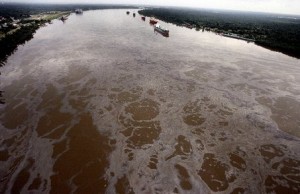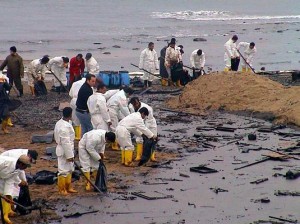Physorg reports a new way to clean up the waste from nuclear operations:
A new paper by researchers at the University of Notre Dame, led by Thomas E. Albrecht-Schmitt, professor of civil engineering and geological sciences and concurrent professor of chemistry and biochemistry, showcases Notre Dame Thorium Borate-1 (NDTB-1) as a crystalline compound which can be tailored to safely absorb radioactive ions from nuclear waste streams. Once captured the radioactive ions can then be exchanged for higher charged species of a similar size, recycling the material for re-use.
If one considers that the radionuclide technetium (99Tc) is present in the nuclear waste at most storage sites around the world, the math becomes simple. There are more than 436 nuclear power plants operating in 30 countries; that is a lot of nuclear waste. In fact, approximately 305 metric tons of 99Tc was generated from nuclear reactors and weapons testing from 1943 through 2010. Its safe storage has been an issue for decades.“The framework of the NDTB-1 is key,” says Albrecht-Schmitt. “Each crystal contains a framework of channels and cages featuring billions of tiny pores, which allow for the interchange of anions with a variety of environmental contaminants, especially those used in the nuclear industry, such as chromate and pertechnetate.”


